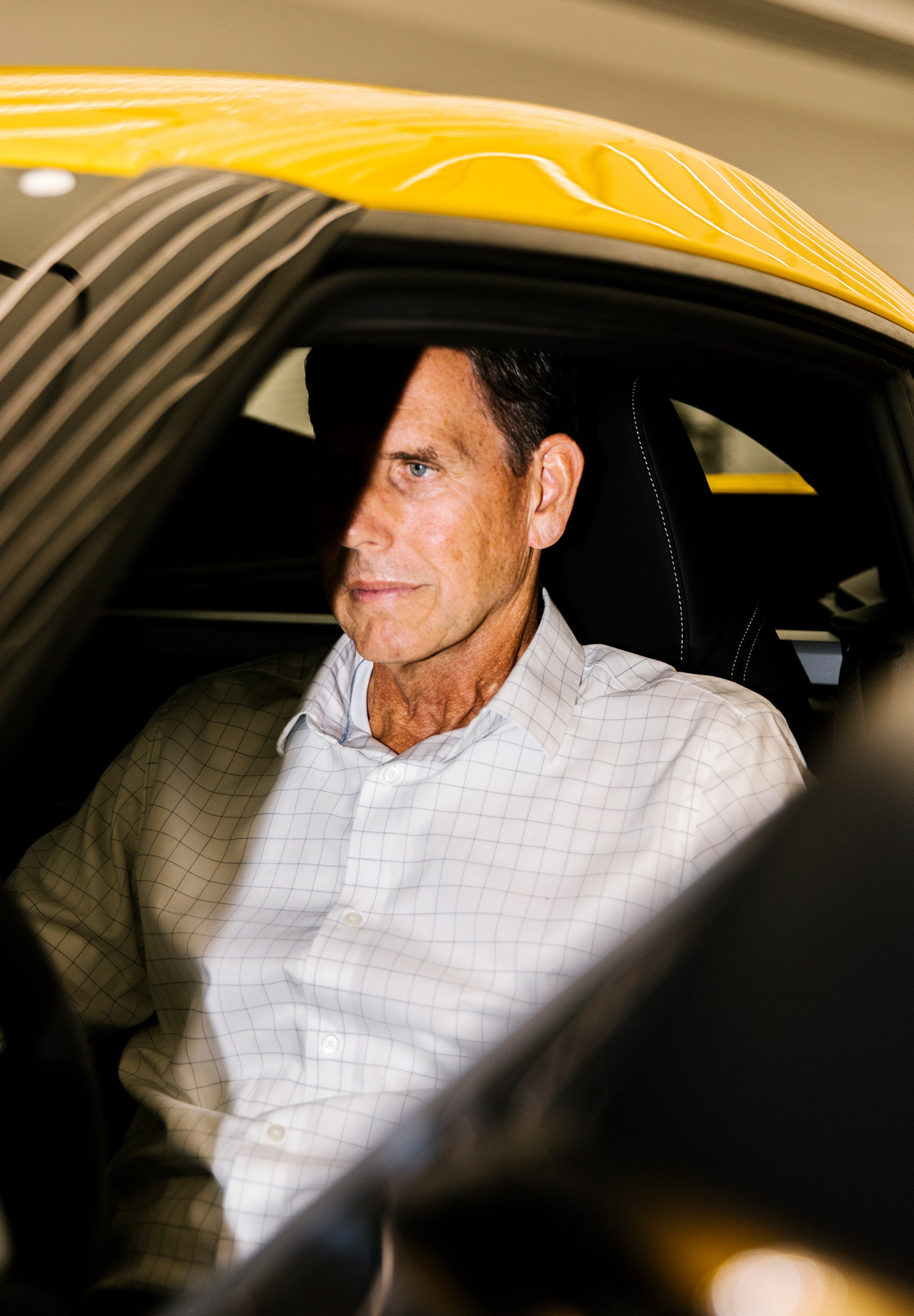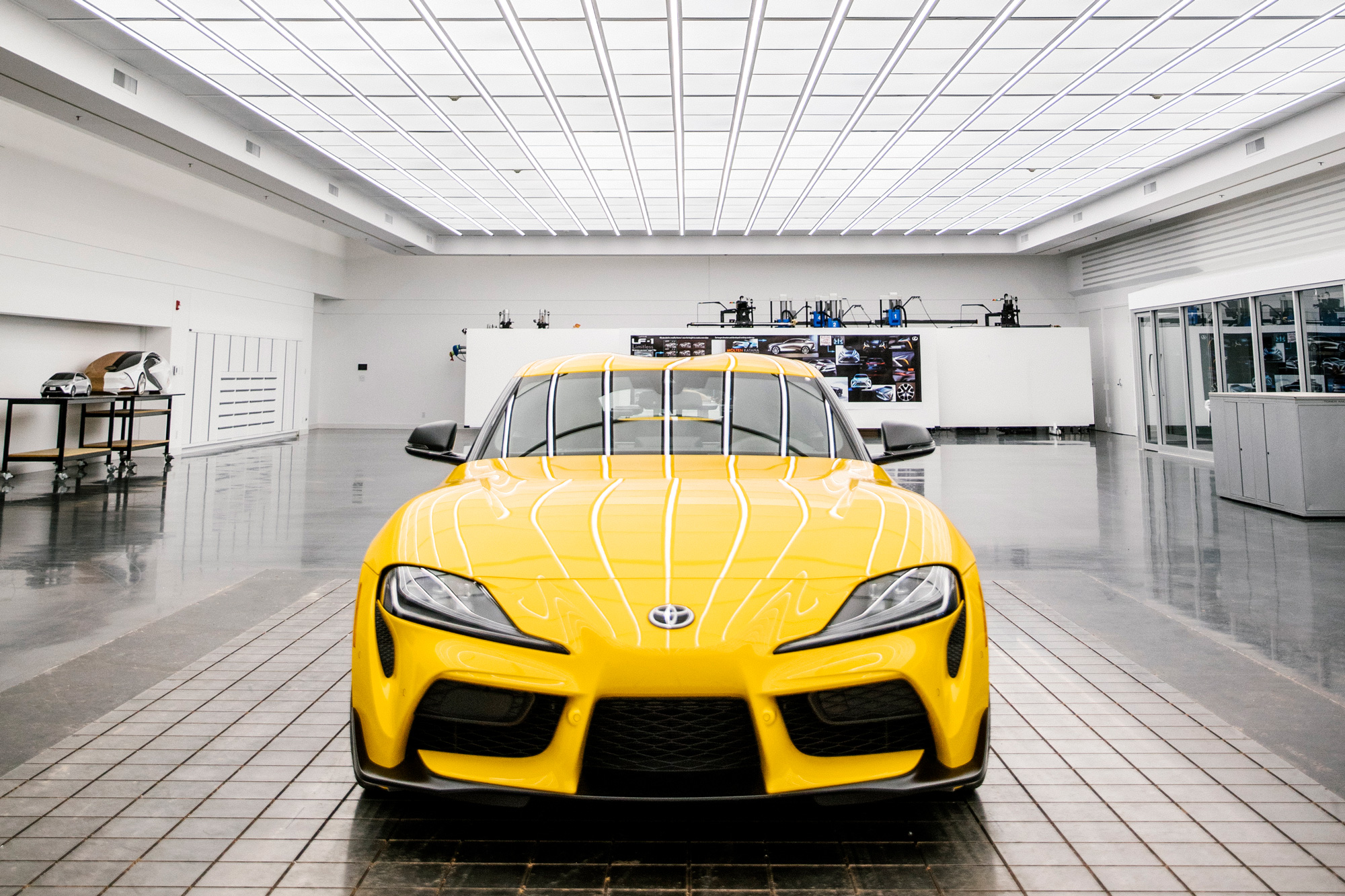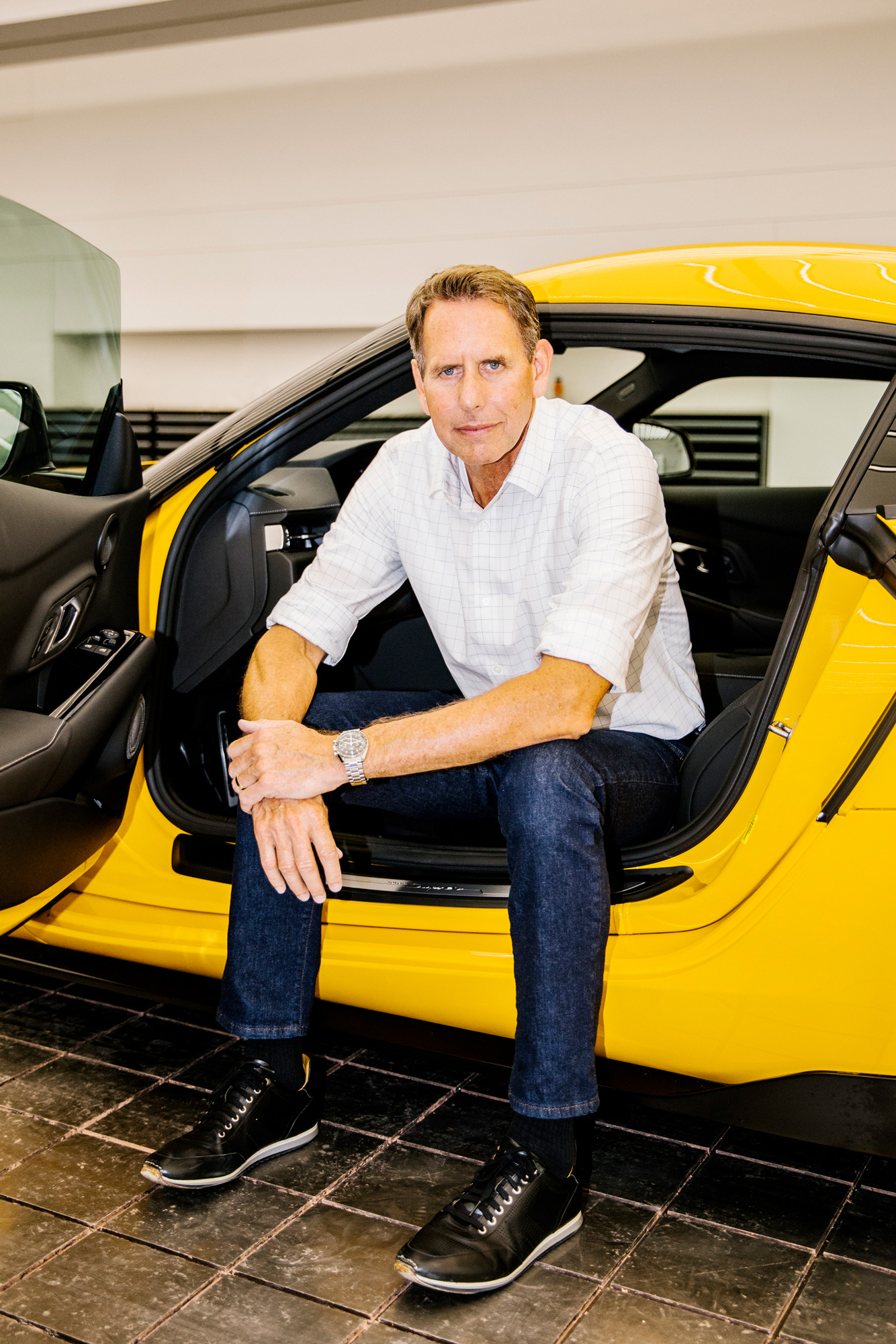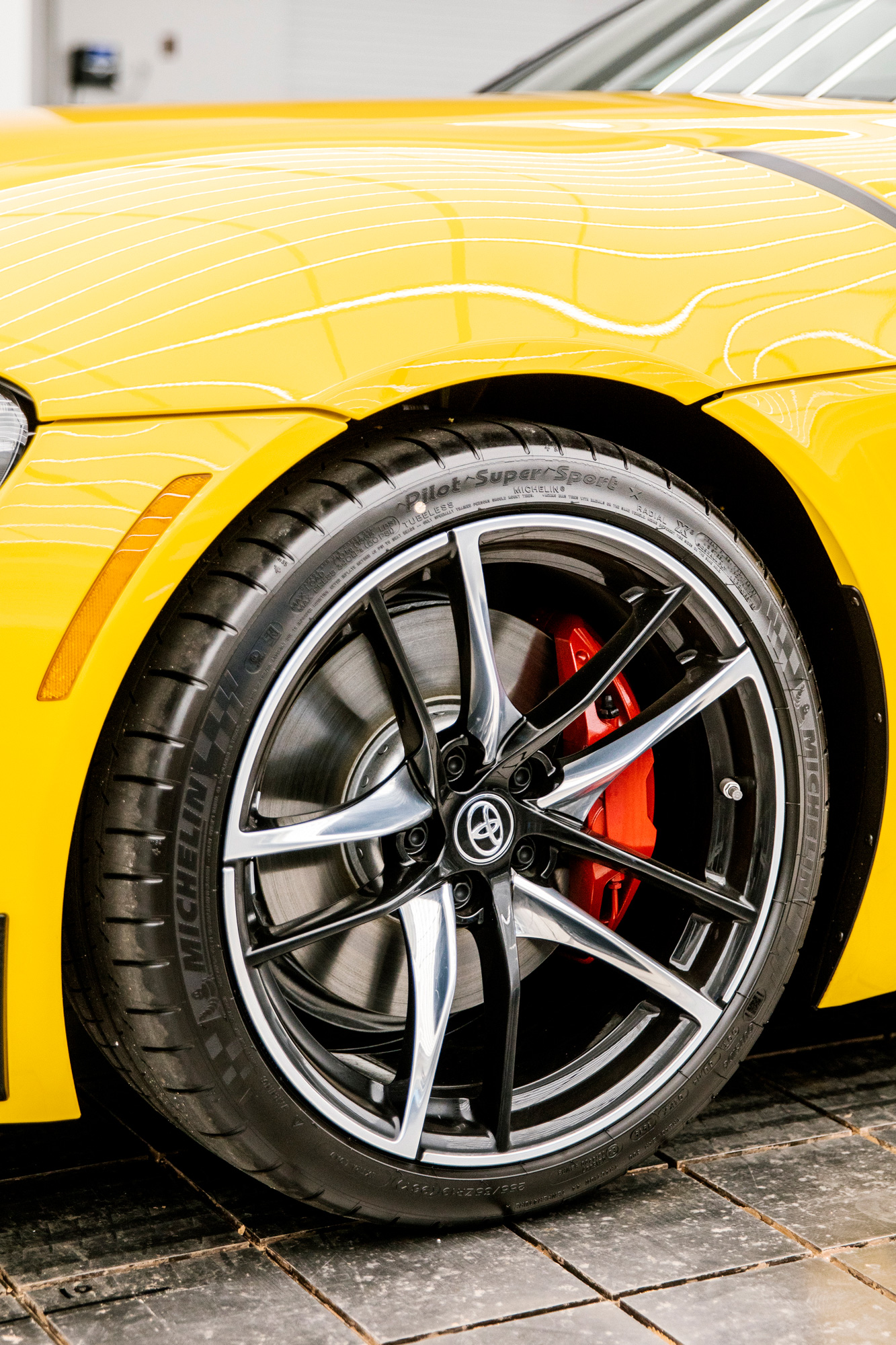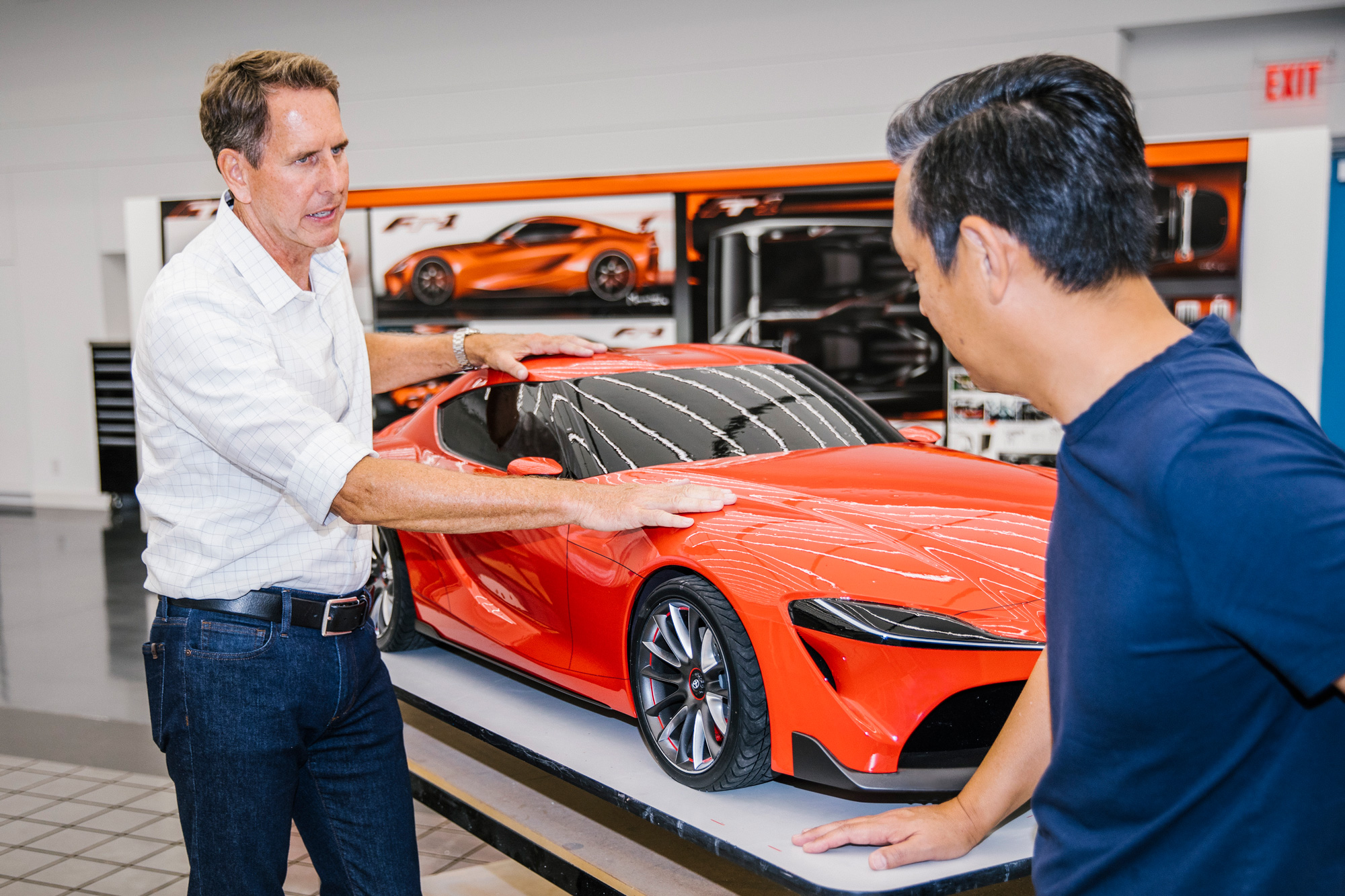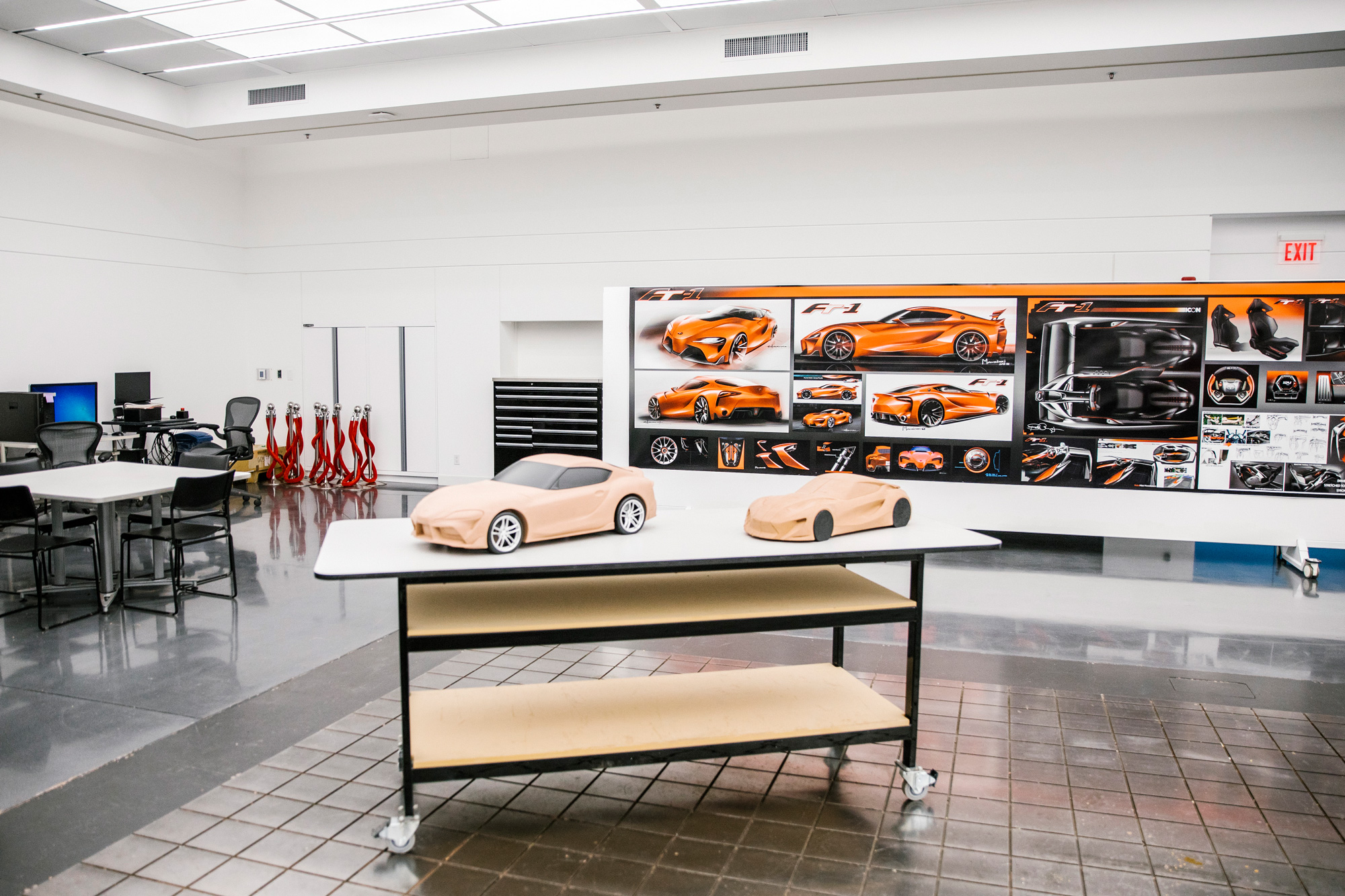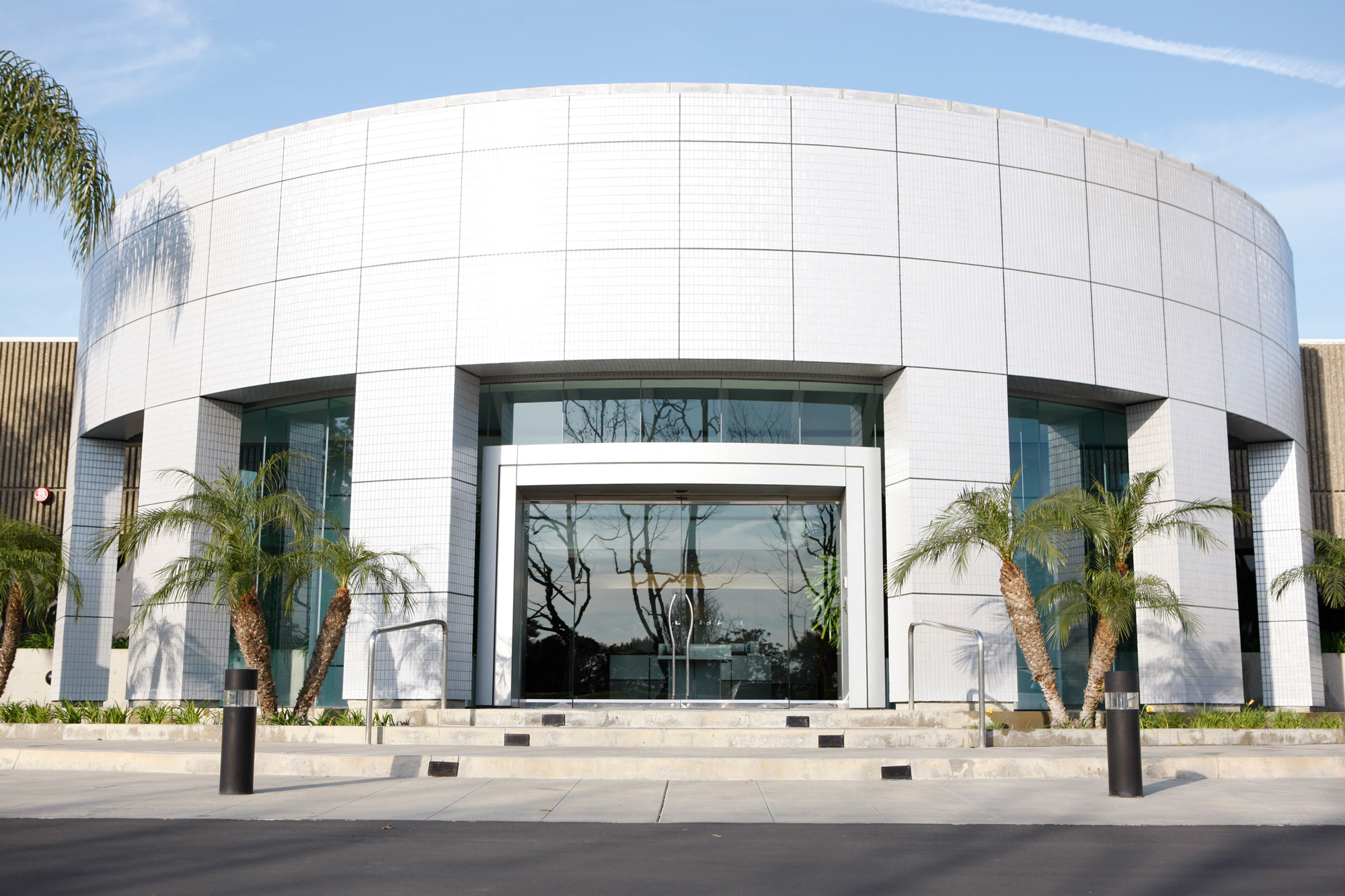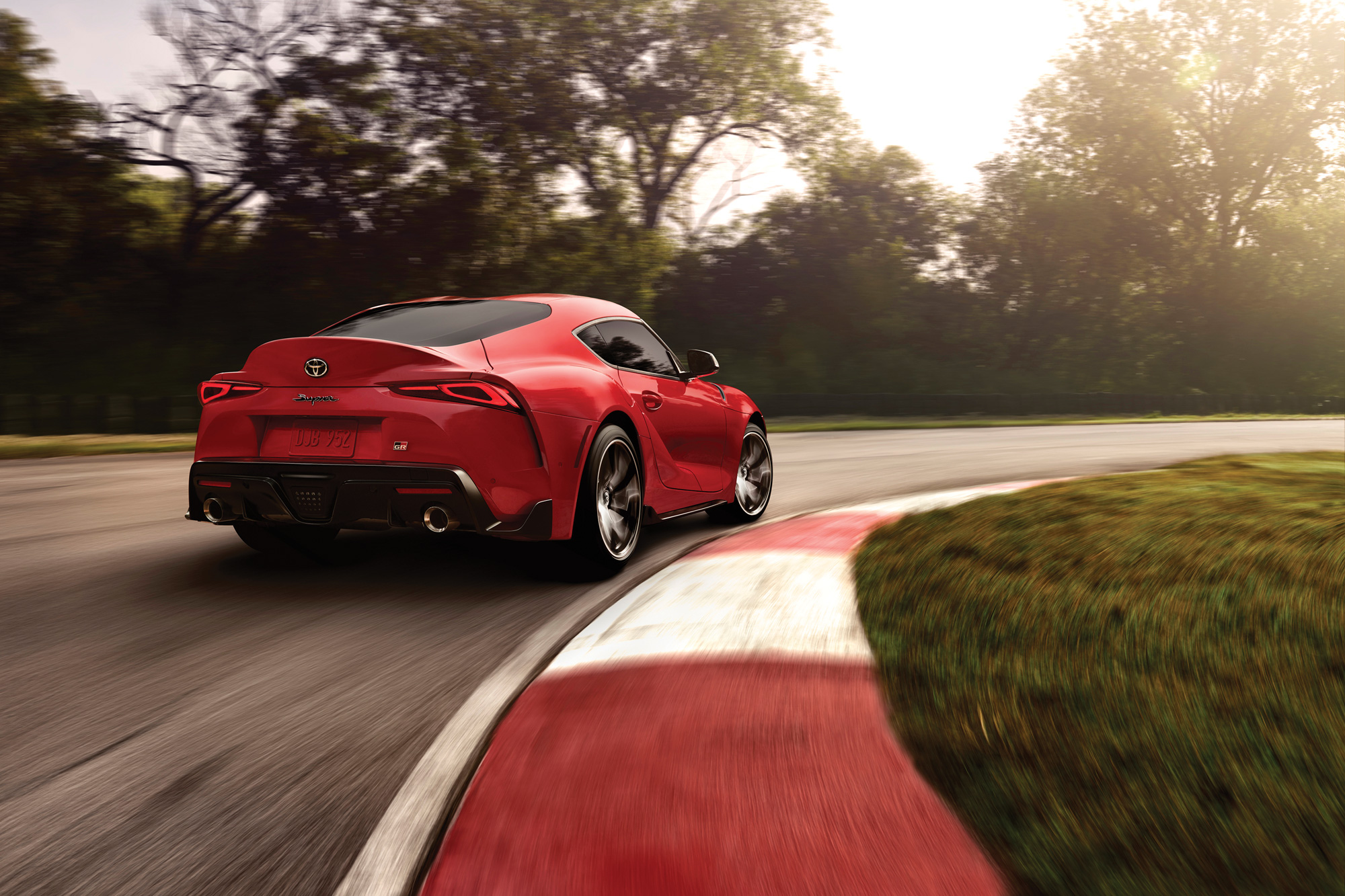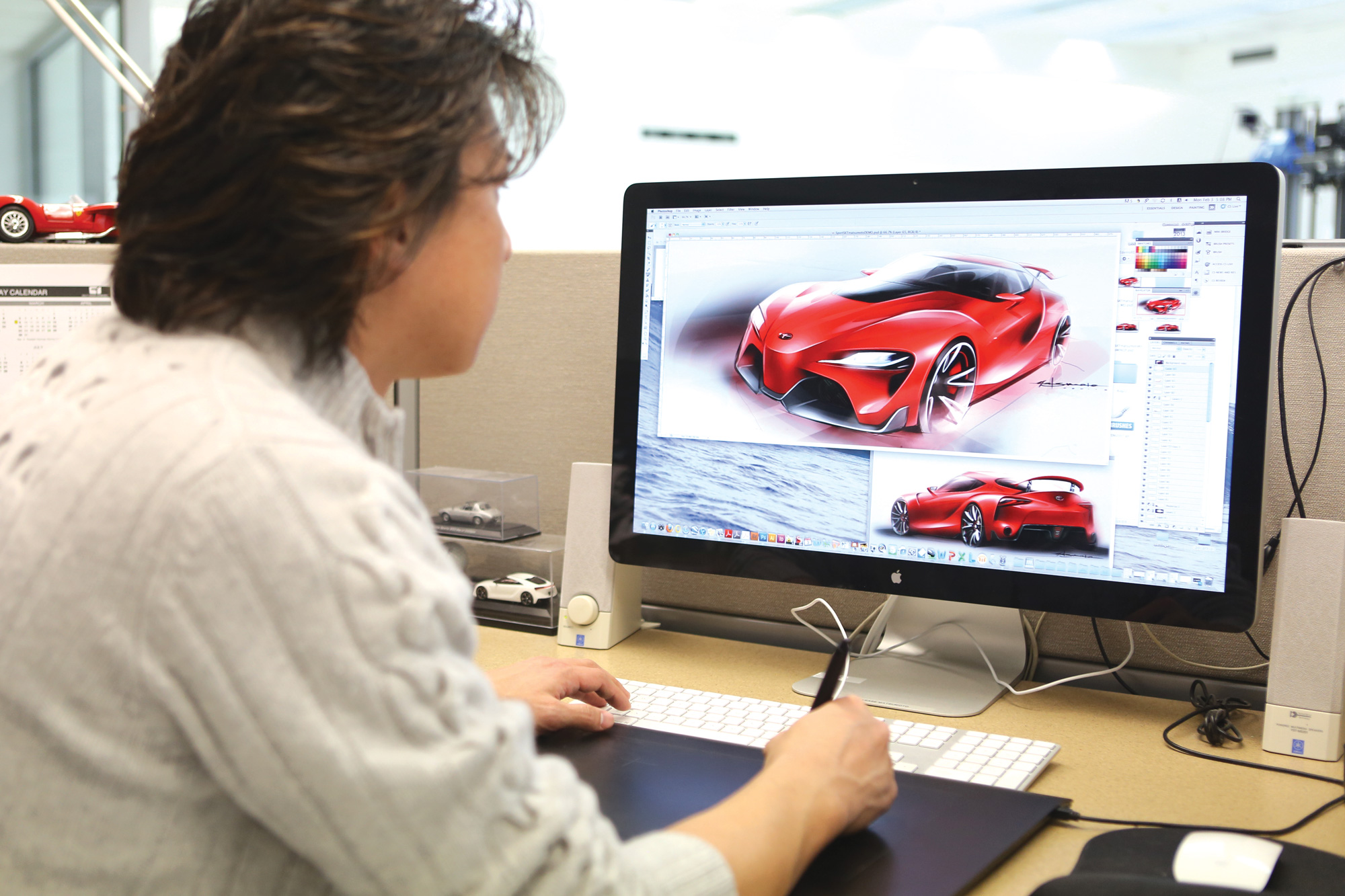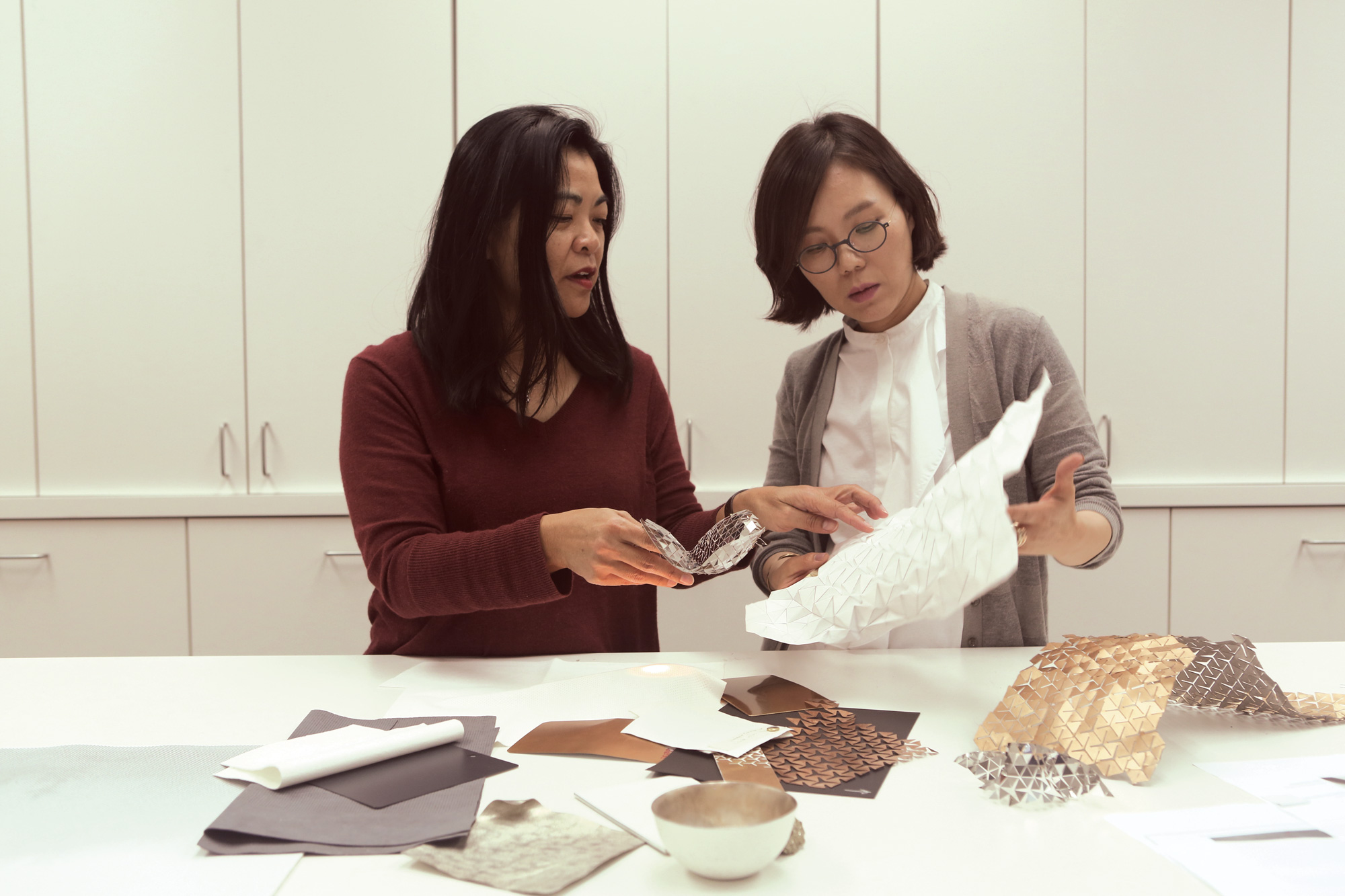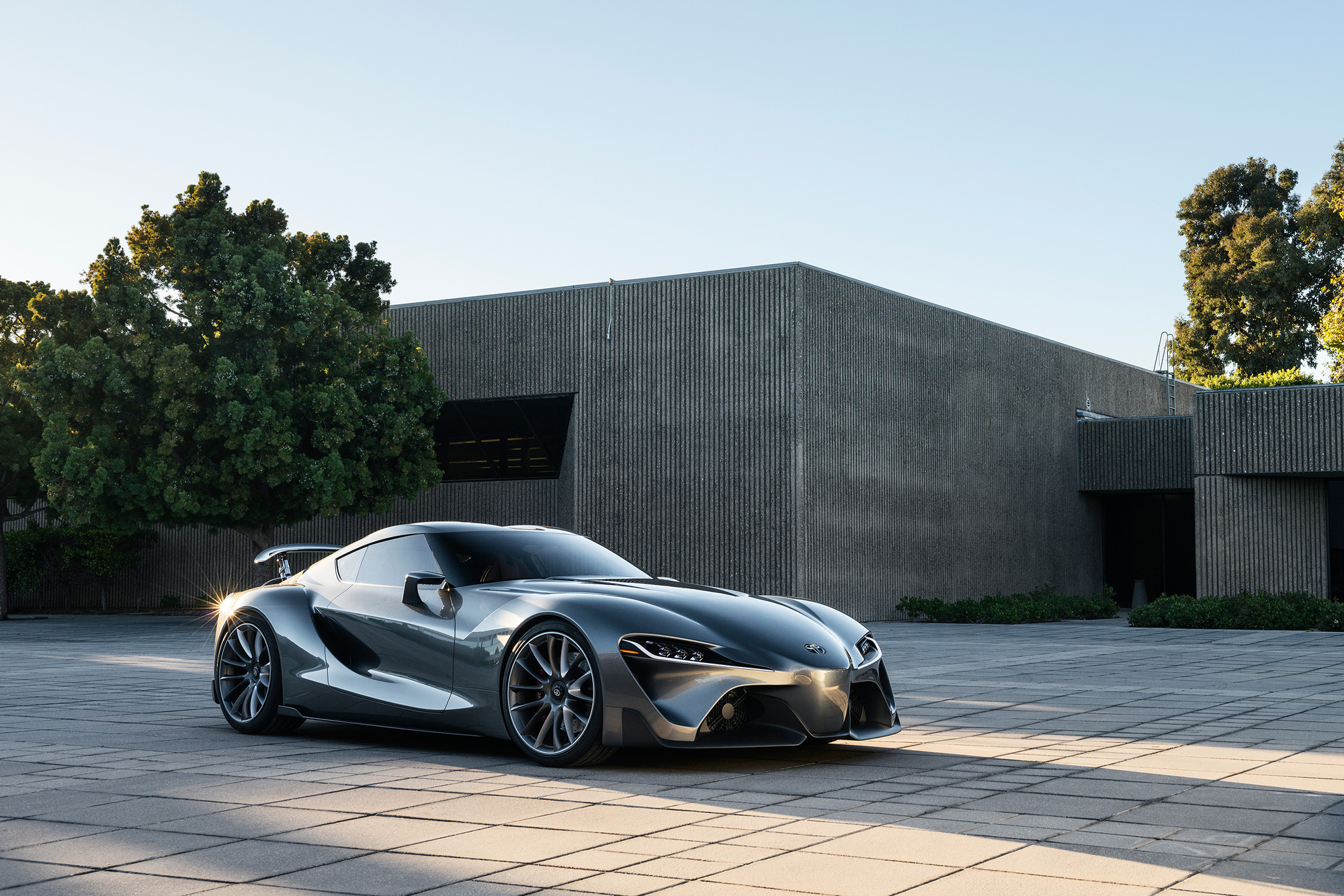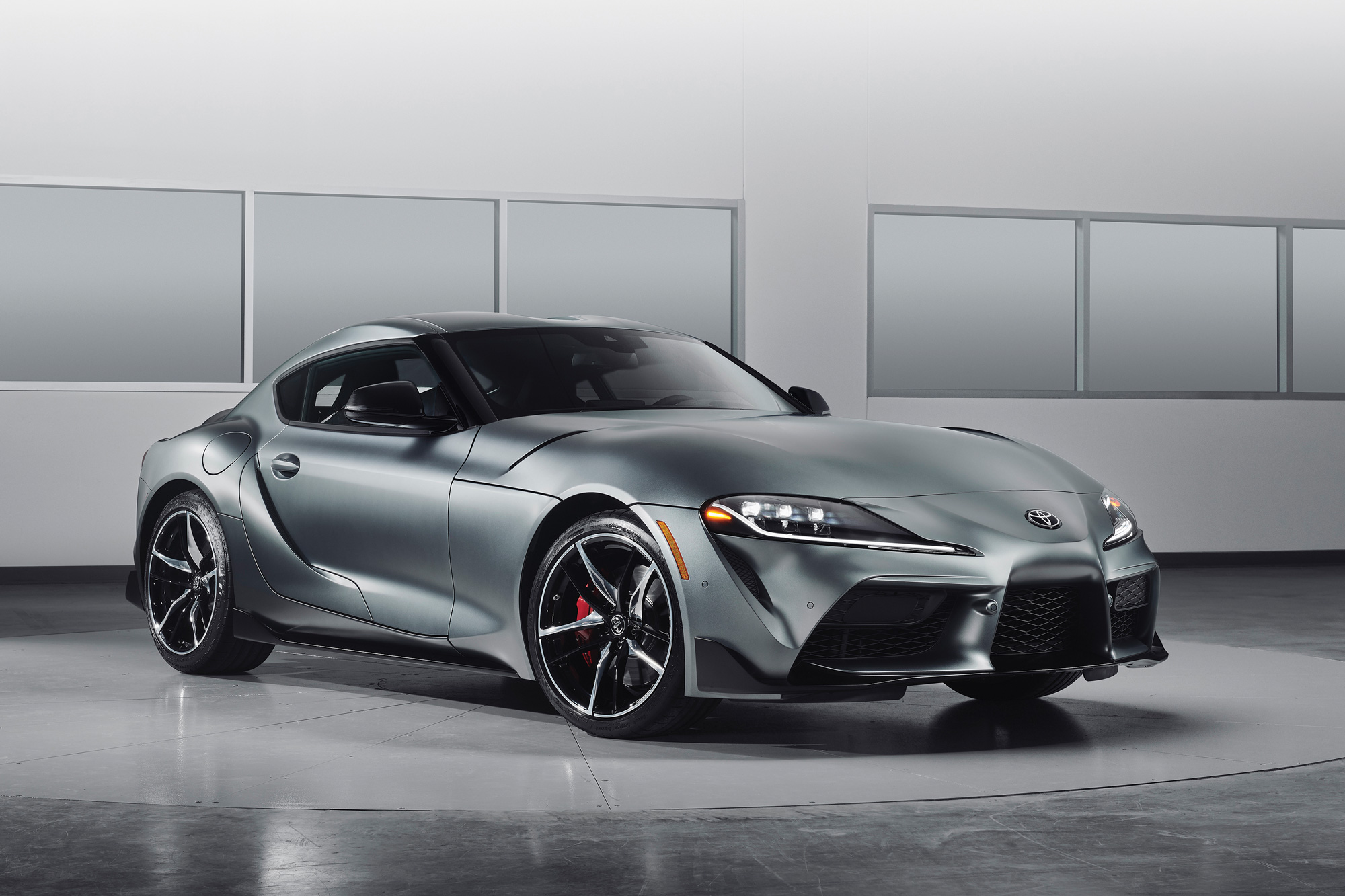If you were interested in fast cars in the ’90s there’s a good chance you rarely even saw the Toyota Supra Mk.4. Released in ’93 with chart-topping performance, advanced technology, and the massively capable 2JZ engine, the car failed to resonate with American buyers. For five years Toyota tried to market the car’s engine and power, but Americans just didn’t care. It was an impressive spec sheet presented with no narrative. In ’98 Toyota realized they had botched the dialogue around Supra and stopped making it altogether.
Then came The Fast and the Furious, the highest grossing film released in 2001. It turned out the film’s true star was not Vin Diesel but the Toyota Supra he raced in it. Suddenly Americans found a connection to the car and demand for Supras skyrocketed. Over the last 20 years a cult following has formed, with rabid audiences demanding Toyota revive the Supra, which they finally did in 2019. To understand what went into reviving such a beloved vehicle, we visited the place were it was created—Calty Design Research Center in Newport Beach, California—and spoke with center president Kevin Hunter.
- “We became designers to work on cars like this,” Kevin says of designing the new Toyota Supra. Photo by Nathaniel Wood
What had to happen after more than 20 years to make the Supra return? Why is this car back on the market?
When Akio Toyoda became president of the company, his famous saying was “no more boring cars.” Toyota had been making great cars—reliable, high quality—but the design wasn’t all that exciting and he set out to change that. To have support from the top to move the design needle is so important. Akio Toyoda is a car enthusiast. He races cars. He drives the Nürburgring. He wants to create exciting cars we can all be proud of. That was a huge shift in our company. When that happened, it galvanized designers’ stance to create more exciting cars.
At Calty we’d been talking about the return of Supra for years, wondering when was the right moment to propose something to our headquarters design studio to work on something that would bring it back. We made a proposal to the design boss in Japan, who was Tokuo Fukuichi at the time. We put together some sketches and a video where we talked to Supra enthusiasts begging for the car to return. We combined that video with the proposal, showed him, and he said, “Yeah, go ahead and work on it.” We created a full-size model and Akio Toyoda approved it as a concept car, which became the Toyota FT-1. We showed that at the Detroit International Auto Show in 2014. The reaction was incredible.
If you hadn’t made that sketch in 2012, would this car exist right now?
I think the car might exist. As it turns out Toyota was in talks with BMW to produce a joint sports car. It was going to be a sports car, but if it was going to be Supra I have no idea. I think Calty pushing the Supra narrative didn’t hurt.
- Kevin Hunter with the 2019 Toyota Supra at Calty. Photo by Nathaniel Wood
- Detail of the 2019 Toyota Supra wheel. Photo by Nathaniel Wood
Why do boring cars get made in the first place?
One of the central reasons is we’re a strong engineering culture, a strong quality culture, but rather conservative in the style area. It manifested itself that over time, Toyota became known as a conservative style company. We were selling a lot of cars. Toyotas are incredibly popular; our customers love them. It also became apparent moving forward that it wouldn’t be good enough to just have high-quality cars because the world around us was changing, companies around us were starting to produce better quality automobiles, so we needed to focus on an emotional component to help drive interest and appeal in our automobiles.
Where does that emotional component come from?
A lot of it is visual—seeing, touching, and the tactile emotional qualities a car can have, the noises it produces. The exhaust notes, the way doors close, the way switches make noises. We were looking at everything to bring more emotional factors back into cars, but styling is a big part of that. The other big thing is the “fun to drive” component Akio Toyoda was talking about, bringing fun back into our cars.
- Photo by Nathaniel Wood
- Photo by Nathaniel Wood
You like looking beyond cars for research. What inspired you when designing what became Supra?
We knew we had some good iconic heritage in our historical sports cars, so we looked back into our history first. The Toyota 2000GT, that is just a beautiful and stunning car. It’s the precursor to what became the first Supra. The other component was the last generation Supra, which was in The Fast and The Furious. That is the car all car enthusiasts point to when they think about the ultimate Supra. We tried to first look at some of those design cues to establish our identity as Toyota. We didn’t want to create or copy any German or Italian brands. We wanted to be pure in our identity. We also knew the heritage of the Supra was an inline-six motor and this creates a long hood, a long proportion. So we wanted it to be clear from the start this could, or should, have a straight-six motor in it, so that’s the reason for the long hood, the cowl being set back, the windshield being set back.
It seems like the car was created with an aftermarket tuner in mind, where things are available to pop off and on. How much of that is what you believed was right for the car versus appealing to the audience?
We didn’t really focus on that part too much. We know to look modern we need to create a well-integrated design that has unified consistency all around. It’s a bit of a challenge to try to create that unified component architecture but also give the customer the ability and the freedom to customize, which is important. We really wanted to create a cool, aggressive, exotic-looking sports car that looked like it belonged on the track. When you see it you immediately say, “That’s a track car. That’s barely even a street car.”
- Established in 1973, Calty Design Research has designed many of the cars you see on the road today, including the Toyota Tacoma, Highlander, and Tundra. Photo courtesy of Toyota
Going after the track car enthusiast, how does the decision to make a no stick shift car come about?
I couldn’t really speak to that. I wasn’t part of that discussion; that’s more of the chief engineer’s matter. Certainly it would be cool to have a stick on that car. I’m a bit old-school. I like manuals still.
You said being “pure in your identity” was a driving force in creating the car. How does the BMW collaboration come into play, thinking about what they’re contributing and the history of their engine?
It worked out that it was a BMW hardware car. It became critically important that we got the emotional style correct on it so the customer feels like this is a Toyota, it’s not a BMW, and more importantly it’s a Supra. My understanding of the tuning of the car is that Toyota and the chief engineer Tetsuya Tada really tuned the car specifically to be a pure high-performance driving track car. I believe there will be different identities when the Z4 is driven versus the Supra.
- Photo courtesy of Toyota
How much of your day is creative versus other tasks I imagine you have to do, like management?
If I had to split it up it’s probably 70% creative and 30% admin. I would love to have 100% creative, that would be nice, but it really doesn’t work out that way. I really love getting in and working with our designers directly and having discussions on the direction we are going to take, how it relates to the research we’ve done, and the concepts we’ve created. That’s the area I enjoy the most. Of course there are admin responsibilities, too. I’m responsible for our Newport Beach and Ann Arbor studios and we have a small studio in Oakland, California as well. We’re always looking to hire new talent, so reviewing talent is one part of my job.
We’re a small studio. Everyone gets a lot of responsibility and our interactions with each other are very casual. We’re not so proper with a lot of hierarchy of management layers, it’s very clean and simple. It really works well; anyone can come up to my office anytime and show me some sketches they’re working on and get guidance and advice. I make it a point to get to the studio every day to talk to people and see what’s going on with each project. I love that aspect of that job. It’s why I came to Toyota; it’s a small, active creative environment. I try to keep the creative direction moving in a positive a way.
What do you look for in new talent?
Somebody who is artistically inclined makes a good designer. They have sensitivity to line and form, and they have a good eye for proportion. Beyond that there is a creative component that comes into play; we’re always striving for innovation so I try to look at how a person is thinking, if their work is innovative, are they trying to move in a new direction with aesthetic taste and form language of their ideas? Are they productive? Do they seem to really enjoy what they’re doing? Creating some volume of work speaks to the enjoyment one is getting out of their work. If you’re not enthusiastic, if you don’t have passion for it, it’s going to be hard to do well; it’s hard to fake that.
- Photo courtesy of Toyota
- Photo courtesy of Toyota
What’s your process for transferring inspiration into the studio?
Lately we’ve been combining digital and physical development, working back and forth between, say, 3D digital development and actual 3D development and sketching. It’s become a really effective and creative tool for us to visualize. One cool example is when we created the LFLC concept for Lexus. There is a beautiful leaf, it’s kind of a twisting plant leaf that was utilized as inspiration into the form language of the car. There were photographs taken of this leaf and we did some vacuum forming of that leaf, and then twisted them and looked for some form inspiration and eventually that type of language led to the LFLC concept, which then became the Lexus LC500, the luxury coupe.
Are there any design details on Supra you’re really proud of?
My favorite view is the rear three-quarters view. When we developed the FT-1 concept that was my favorite view and it still is. That powerful rear quarter panel shape and how deep and bold they are—the cabin tucks in tight to the rear and it speaks to the power of the vehicle and the efficiency of the cabin.
Were there any concessions that had to get designed out of the production car?
The car got scaled down quite a bit. FT-1 was a big car. One reason was for being on the show car stage. We wanted drama and impact. Motor shows are about theater and creating excitement. But the other reason it was big was we knew the LC500 was coming, and we thought maybe, just maybe, they could build it on that platform. At that time we didn’t know there was any BMW arrangement underway, so the big challenge was how to take FT-1, which was a pretty sizable car, and compress it down to the actual production package that became Supra.
Were there any design challenges that were particularly difficult in dealing with production scale?
We wanted to get enough sculpture across the hood, but by the time you have your engine packaging and then factor in your pedestrian impact laws for the front end and fender tops and hood tops, sometimes the hood can get a little high and it can get a little flat. We worked extra hard to try to get as much shape across the hood as we could and achieve a proper position while meeting the safety standards.
- Calty’s FT-1 concept car, designed with the possibility of seeing production on Lexus’s (a Toyota brand) LC500 package. Photo courtesy of Toyota
- Supra retained many of the FT-1’s looks but was slimmed down to the BMW Z4 package. Photo courtesy of Toyota
Is there a back and forth when you submit design to meet regulations?
We still challenge them from time to time; it depends. With experience and time, you get a feel for the areas that are challengeable. But certainly with designing for today’s safety standards it’s getting much more difficult to create a unique identity and emotional design.
What leads to boring cars?
In the past designers basically got handed a package from engineers like, “Here it is. Here’s the wheel base. Here are the overhangs, the width. Here is where the cowl is going to be, the belt line. Go make a pretty car.” But design is not that simple. Proportion is one of the most important aspects of creating anything of beauty. Now we are part of the early packaging process and we work together with engineering to first produce a good proportion, and that’s a process of creating fantastic design.
Would you take on designing a self-driving car?
Yeah. I mean, we are involved, we will be involved in those projects. It’s a design problem to solve, and it’s a user experience we want to solve. When you think perhaps there will be a time when cars don’t crash, well, do we need to even face forward anymore? Can you face sideways? Can you face toward the rear? Can you face each other? So we’re really diving into how to create something appealing in a self-driving world.
With how much technology has changed, what advice would you give to a young person who wants to study design and apply it to the automotive world?
The fundamental skills of what a designer did 30 to 40 years ago are still relevant today. You have to learn new tools—most of our designers don’t sketch with paper and pastels, markers, and paint. Everything is digital. Whether they’re sketching on a tablet or a canvas or paper, the artist still has to create visuals. You have to know how to draw. You have to understand color theory, how light and shadow work. All those fundamentals are still in play, just some of the tools have changed. Surprisingly we still approve all design by a traditional full-size clay model. Clay models have been used in the car industry for well over 50 years now, and we’re still doing it.
Do you think people might be surprised if they saw what really goes on during your 9 to 5?
Designing cars is complicated. It’s a complex process with all the engineering and manufacturing efficiency. In the end we’re a car manufacturer, so we have to be profitable. What drives profitability is the efficiency in the factory—that we can produce X cars in X time. There are so many factors that go into making final decisions about design components, what materials we can use and how they should be used. People might be surprised that there is a lot of negotiating between design and engineering. The glamorous part of the job is seeing the designer at his tablet painting or sketching, but that’s a small part of the job. The biggest part of the job is execution once you have an idea, figuring out how to execute to the safety standards, factory efficiencies, marketing plan; deploying all those factors into the design can be daunting at times.
This article originally appeared in the Fall/Winter 2019 issue of Sixtysix with the headline “Kevin Hunter.” Subscribe today.
Interested in going behind the design of other vehicles? We speak with the designers behind the Ford Bronco, Lotus Eletre, a custom Rolls-Royce Wraith and Livewire.
